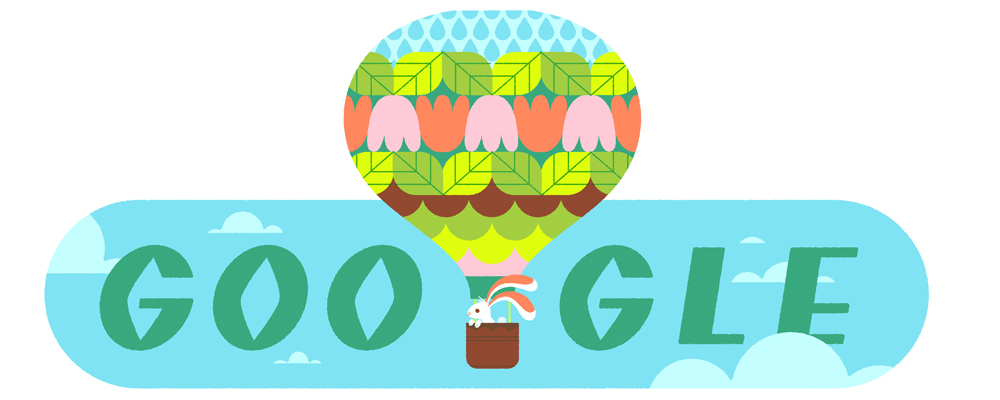Vernal equinox 2020: Google doodles celebrate Earth's changing seasons

Google's doodle marking the beginning of spring in the Northern Hemisphere on March 19, 2020.

Google's doodle marking the beginning of fall in the Southern Hemisphere on March 19, 2020.
Spring is coming early to the Northern Hemisphere (and fall to the Southern) and Google has two new balloon-themed doodles to celebrate the changing seasons.
This year, the seasons change this evening (March 19 EDT, March 20 GMT), the earliest equinox in 124 years. That record is on account of a quirk of the leap year cycles, which has given the U.S. relatively early spring equinox dates since 2000.
The equinox marks when Earth's orbit around the sun carries the planet so that its axis points neither toward nor away from the sun. That alignment means that the Northern and Southern hemispheres receive equal amounts of the sun's energy.
Related: The 2020 vernal equinox brings earliest spring to the US in 124 years
As Earth's orbit continues, the planet will be pulled so that the axis gradually points the Northern Hemisphere toward the sun and the Southern Hemisphere away from it. That's why this equinox is the vernal, or spring, equinox in the north and the autumnal equinox in the south.
The solstice this year, when the axis points most directly toward and away from the sun, will occur on June 20.
- Best night sky events of March 2020 (stargazing maps)
- Night sky, March 2020: What you can see this month [maps]
- The brightest planets in March's night sky: How to see them (and when)
Email Meghan Bartels at mbartels@space.com or follow her @meghanbartels. Follow us on Twitter @Spacedotcom and on Facebook.
Breaking space news, the latest updates on rocket launches, skywatching events and more!
OFFER: Save at least 56% with our latest magazine deal!
All About Space magazine takes you on an awe-inspiring journey through our solar system and beyond, from the amazing technology and spacecraft that enables humanity to venture into orbit, to the complexities of space science.

Meghan is a senior writer at Space.com and has more than five years' experience as a science journalist based in New York City. She joined Space.com in July 2018, with previous writing published in outlets including Newsweek and Audubon. Meghan earned an MA in science journalism from New York University and a BA in classics from Georgetown University, and in her free time she enjoys reading and visiting museums. Follow her on Twitter at @meghanbartels.

